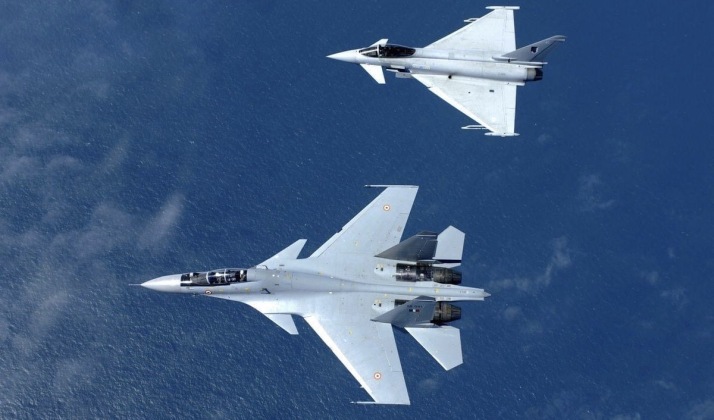News
F-35s Dogfight Russian-Built Su-30MKI Fighters in New Arabian Sea Exercises
The British Royal Navy and the Indian Air Force have held a series of simulated air-to-air combat exercises over the Arabian Sea, after the British aircraft carrier HMS Prince of Wales led a strike group to visit the South Asian state. The air-to-air engagements were held at the end of Exercise Konkan 2025, a bilateral training series intended to strengthen maritime cooperation. The Indian Air Force deployed eight Su-30MKI fighters, four Jaguar attack jets, and an A-50 AEW&C system, which engaged six F-35B fighters that operated from the carrier. Little is known regarding the simulated engagements, including whether they took place within visual ranges, beyond visual ranges, or a combination of the two. Engaging the F-35 may provide the Indian Air Force with rare and highly valued experience engaging fifth generation targets, while tensions between Russia and the United Kingdom make the opportunity to engage the Russian-built Su-30 potentially highly beneficial for the British stealth fighter units.

Simulated engagements with fifth generation fighters are taking place at a time when India is widely reported to be close to signing a contract to procure its first aircraft of the new generation, namely Su-57 Felons, from Russia as part of a license production deal. Indian sources have widely reported that the Su-30s were able to achieve highly favourable results against the F-35Bs, with their particularly large and powerful sensor suites paired with support from the A-50’s own radar potentially compensating for the advantages provided by the F-35’s stealth capabilities. Although the F-35’s combination of AIM-132 visual range missiles and distributed aperture systems provide a highly formidable visual range combat capability, the fact that the fighters cannot carry any visual range missiles internally when retaining their stealth profile remains a major limitation, and makes it imperative under most circumstances to avoid combat at shorter ranges.

In terms of manoeuvrability, the Su-30MKI and the F-35B are at opposite ends of the spectrum among 21st century fighters. Like almost all modern fighters, the Su-30MKI can manoeuvre to 9g, while its thrust vectoring engines make it among the most manoeuvrable fighters at low speeds. Its high speed manoeuvrability is also exceptionally high. The F-35B, by contrast, is less manoeuvrable than any post-Cold War fighter type, and can only manoeuvre up to 7g, while being highly limited in its ability to fly supersonically. The F-35 has the advantage of a significantly more modern radar and overall sensor and avionics suites, which compensates for the radar’s much smaller size. Both fighters carry similarly capable beyond visual range missiles, the R-77-1 deployed by Su-30s, and the AIM-120C deployed by British F-35s. Both aircraft are expected to be modernised significantly in the near future, with F-35s integrating Meteor missiles for a superior air-to-air performance, while the Su-30s integrate a new active electronically scanned array radar that may bridge the technological gap with the F-35’s own primary sensor.












